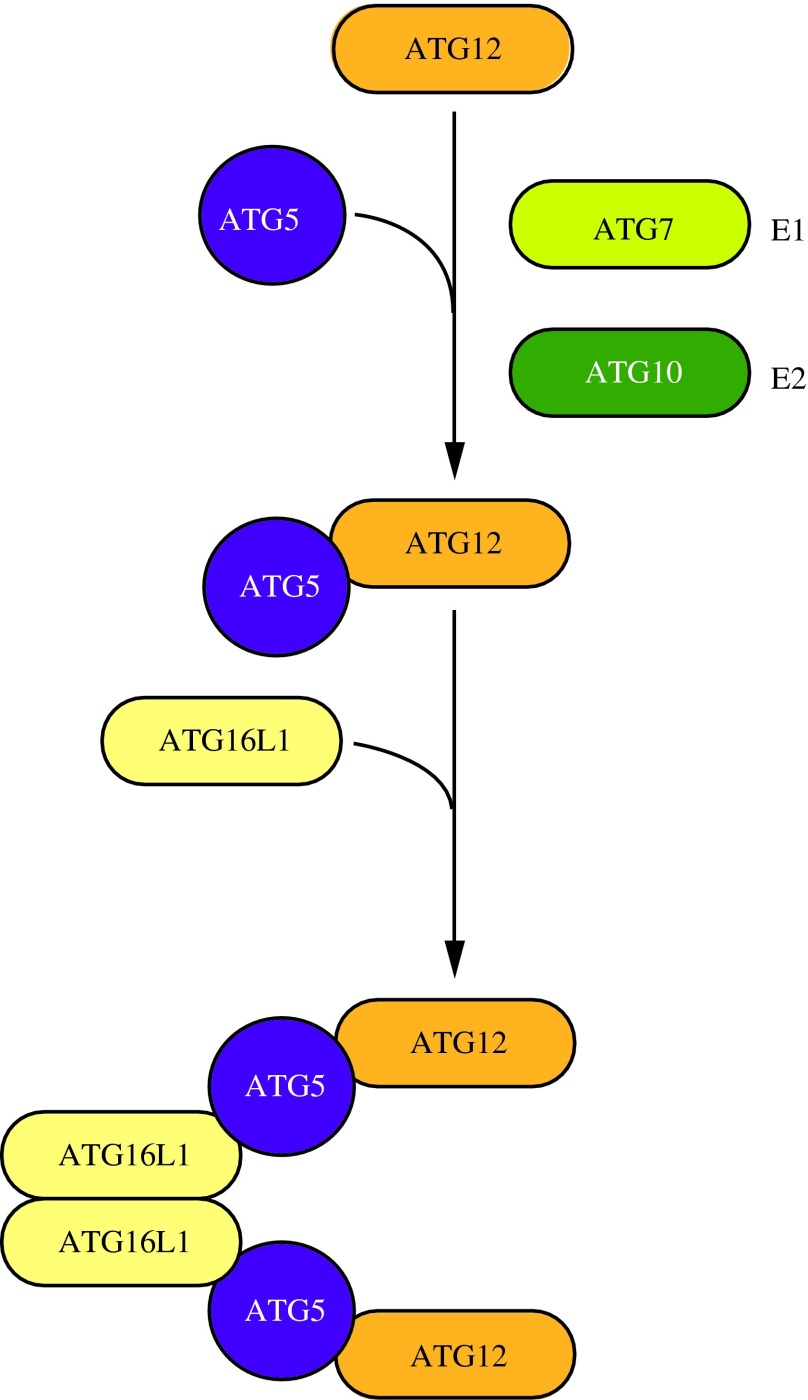
Autophagy vesicle elongation is a crucial phase in the autophagy process, during which Atg12 conjugation plays a vital role. In this process, Atg12 is covalently attached to Atg5 through a ubiquitin-like conjugation system to form the Atg12-Atg5 complex. Subsequently, Atg16L1 non-covalently binds to the Atg12-Atg5 complex, forming a large complex of approximately 800 kDa. This complex is essential for the expansion and closure of the autophagosome membrane. The conjugation of Atg12 is catalyzed by Atg7 (an E1 ubiquitin-activating enzyme-like protein) and Atg10 (an E2 ubiquitin-conjugating enzyme-like protein). The Atg12-Atg5 complex may also possess E3 ubiquitin ligase activity, facilitating the conjugation of LC3. Moreover, the Atg12-Atg5-Atg16L1 complex and the interaction between Atg12 and Atg3 may specify the site of LC3 lipidation. The Atg12 conjugation system is essential for the formation and maturation of autophagosomes, and its dysfunction is closely associated with the development of various diseases.
Product List
| Target | Catalog# | Product Name | Reactivity | Application |
|---|---|---|---|---|
ATG5 | ATG5 Rabbit Monoclonal antibody | Human,Mouse,Rat | WB,IHC,IF,IP,ELISA |
Related Products
Super-sensitive ECL chemiluminescent reagent
References
- An overview of autophagy: morphology, mechanism, and regulation. Parzych KR, et al. Antioxid Redox Signal. 2014. [PMID: 23725295]
- The Atg8 and Atg12 ubiquitin-like conjugation systems in macroautophagy. 'Protein modifications: beyond the usual suspects' review series. Geng J, et al. EMBO Rep. 2008. [PMID: 18704115]
- Formation of the approximately 350-kDa Apg12-Apg5.Apg16 multimeric complex, mediated by Apg16 oligomerization, is essential for autophagy in yeast. Kuma A, et al. J Biol Chem. 2002. [PMID: 11897782]
- Mouse Apg16L, a novel WD-repeat protein, targets to the autophagic isolation membrane with the Apg12-Apg5 conjugate. Mizushima N, et al. J Cell Sci. 2003. [PMID: 12665549]

